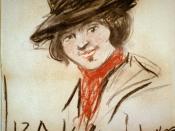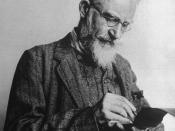The myth of Pygmalion has been appropriated into different contexts in many forms of media including theatrical productions and films. Appropriations, such as the film "Pretty Woman", directed by Garry Marshall, and Bernard Shaw's "Pygmalion", have taken the context from the myth and transformed it into the reflection of the society in the time of which they were composed. The Pygmalion myth was from a story in Ovid's "Metamorphoses". During the time when the myth was derived, the nature of the persona was strongly influenced by his culture and religion. Pygmalion lived in a society which idealized perfection, beauty and chastity in women. However, the "corruption" of females caused him to despise them. The gods were greatly worshipped and it was his prayer to Venus which awakened the statue, Galatea. The themes which are found in the myth are the value of religion and the belief in perfection.
This represents the eminence of what was conjectured by the society at the time. However, during the evolution of a new society, the attitudes of humanity, values and ideas have changed.
In the play, "Pygmalion", written by Bernard Shaw, there are many values and ideas which are not presented in the original myth. The play is set in 1913, England, which at that time had an unequivocally divided society. Professor Higgins is not a good representation of his class because he is rather brusque and crude. And because of this, Shaw does not "equate" social hierarchy with class in sense of manners, tact, and dignity. On the other hand, Language is the most important device in the play as it is a tool used to distinguish between the social classes. This is demonstrated at the beginning of the play, when Higgins could determine where a person came from by recognising...


